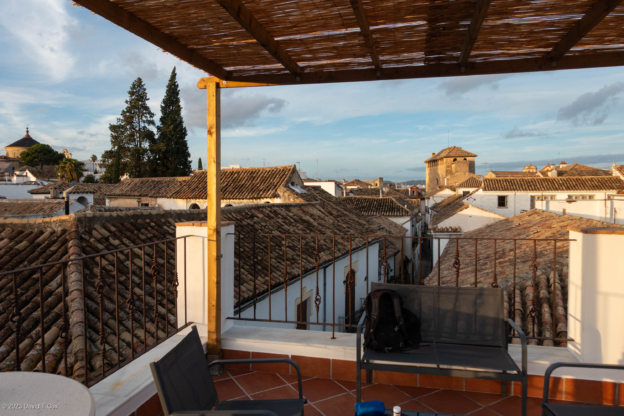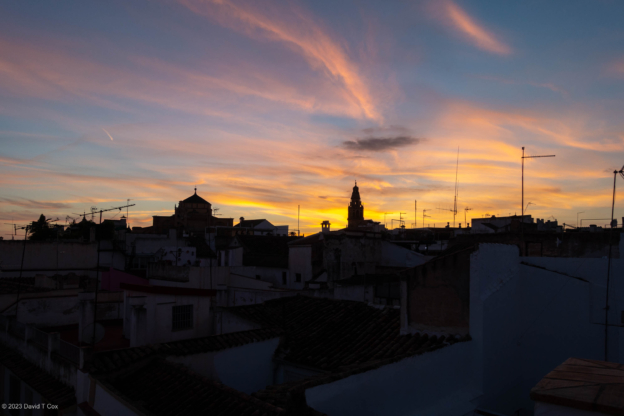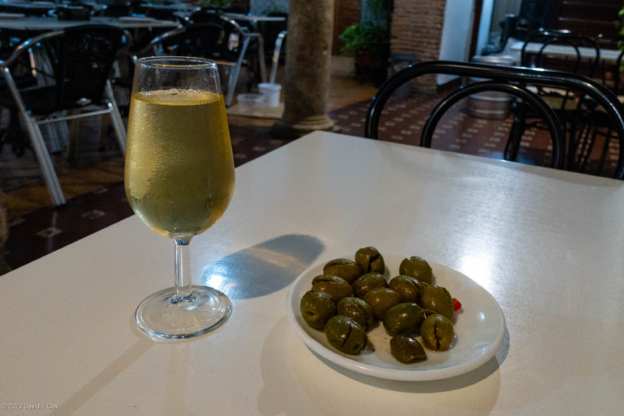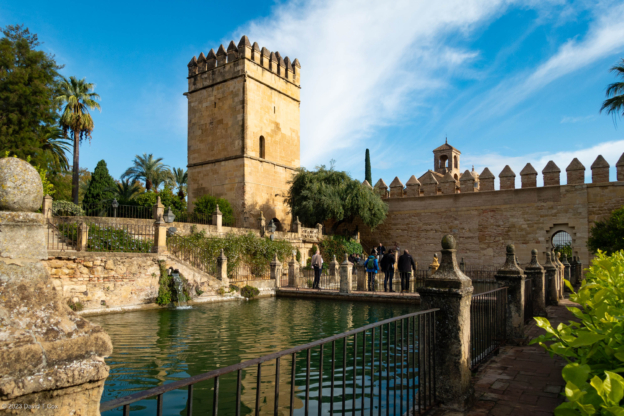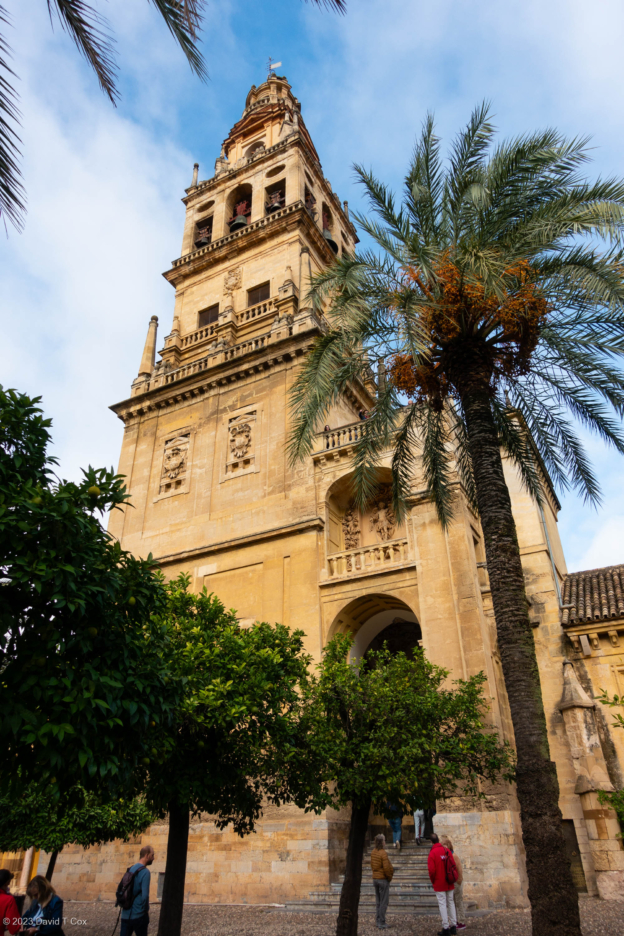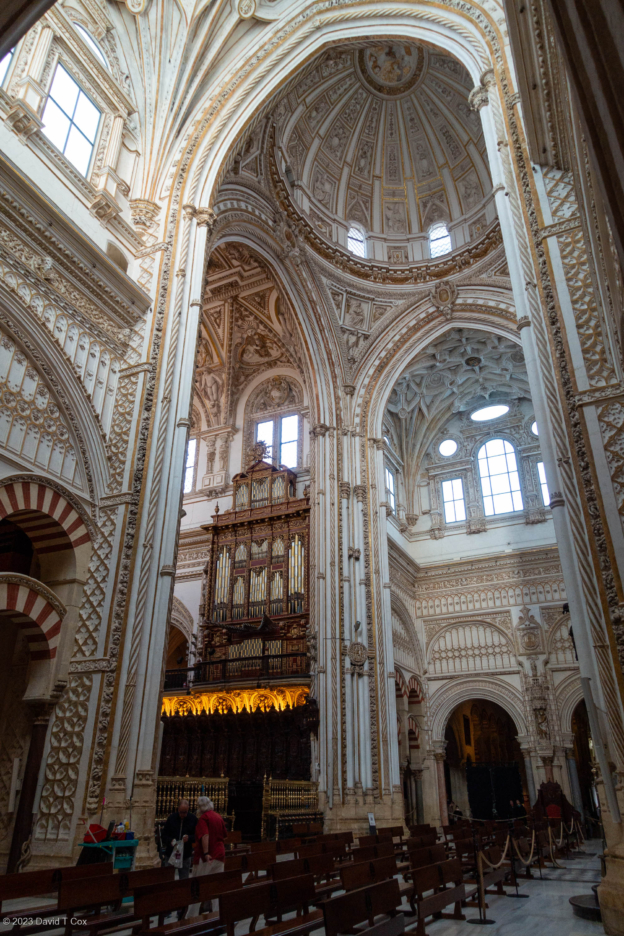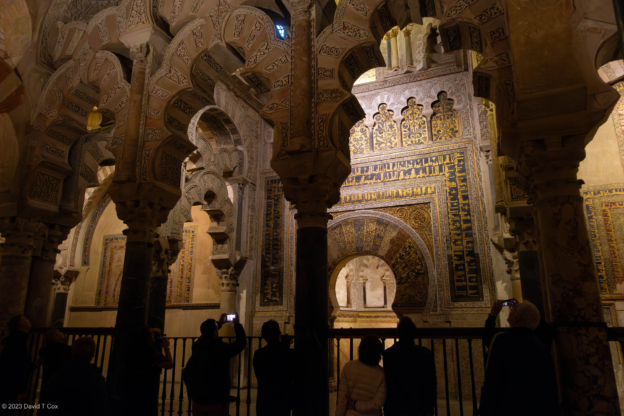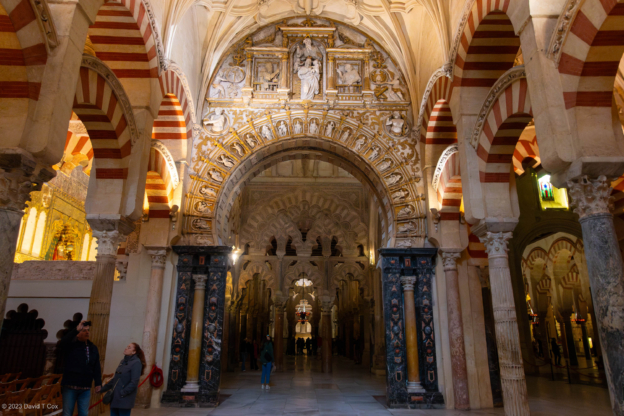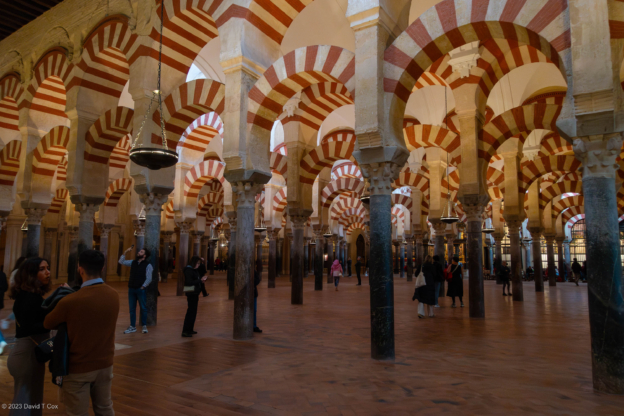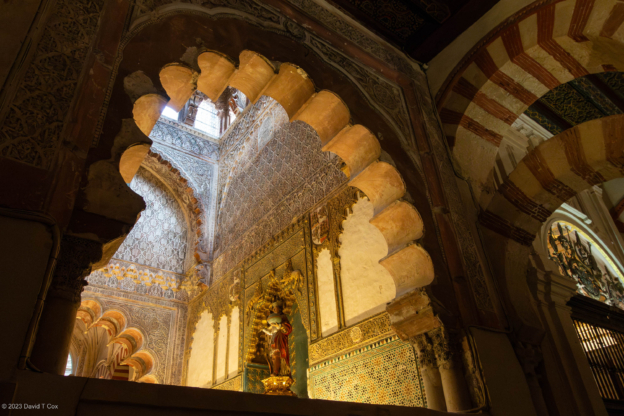All Photos Are Below the Travelogue Text
Click on Any Photo To Open Slide Show
To print the travelogue, right click anywhere on the page. Choose "Print" from your browser dialog box. You can choose Save to PDF in the browser print window.
Share your thoughts.
Email Dave - coxdavid55@hotmail.com
My apartment in Cordoba is so modern and well located I have extended my stay here to 12 days. On the second level I have four floor-to-ceiling glass doors with small balconies, 2 facing northwest and 2 northeast. With a full kitchen, I have been eating many meals in the apartment. The complex has a full rooftop terrace, with views to the Great Mosque and Cathedral bell tower, where I pass most late days reading and watching the large flocks of Egrets passing overhead for the night roost. At sunset dozens of small bats emerge to take care of any flying insect problem. The downside has been the weather. Although this is the rainy season, I am told everywhere these last several weeks that the storms are unusual in their rainfall and high winds. Since Plasencia, I have walked through many parks in 3 different towns and found recently downed trees and large branches, cordoned off with police tape. Of course, the blame is directed to climate change – enhancing the already stormy season.
Cordoba is most famous for the 9th through 12th century Moorish occupation and the huge mosque (Mezquita) and Caliphate which for 200 years rivaled Mecca. After the reconquest by the Christian forces in the 13th century, most of the great mosque was left, but about 10% of its floor space, right in the center of the hundreds of double arched pillars, was converted to a Cathedral, with its towering dome more than doubling the height of the mosque in that restricted central space. Altogether a most unique building, not even close to resembling anything else I am aware of. Nearby is the Alcazar Fortress of the Catholic Monarchs, most recently used as a prison, and now a major tourist attraction. Of course, as one of the earliest World Heritage Sites, the crowds of tourists, most in large tour groups, clog all the hundreds of tiny ancient alleys that run through the old town.
As I have visited Cordoba many times, I have spent much of my current visit wandering down by the Guadalquivir River where it runs under the Roman bridge. At the bridge the river broadens and runs through the ruins of four 19th century flour mills. I have spotted a number of interesting bird species, but do not have the camera equipment for such photography. I also have spent a number of evenings supping at the Sociedad de los Plateros, an ancient fraternal order, which has several taverns where they stock and sell the famous Cordoba Sherries; I always order the Fino, a white fortified wine, together with the wonderful deep-fried eggplant drizzled with honey.
My small tourist apartment complex (13 units I believe) is managed by a young college student, Stanislav, from Ukraine. He came to the university in Cordoba as a foreign exchange student about 2 months before the war started, and continues his studies here. I do not know his long-term plans, but assume he does not wish to return so long as the war continues. I suspect he would be involuntarily drafted.
From Cordoba I travel to Malaga on the southern coast tomorrow. I have never been there, but the Malaga region is famous for for its “White Villages,” which surround the city. Later, Dave
- from rooftop terrace, El Ajibe apartment, Cordoba, Spain
- Mezquita silhouette at sunset from rooftop terrace of El Ajibe apartment, Cordoba, Spain
- old water mill along Guadalquivir River, Cordoba, Spain
- Olives & Fino @ Sociedad Plateros, Cordoba, Spain
- Tower from gardens, Alcazar, Cordoba, Spain
- bronze news reader near Plaza Tendilla, Cordoba, Spain
- Calahorra Tower at end Roman bridge over Guadalquiver River, Mesquita in background, Cordoba, Spain
- Mezquita tower, Cordoba, Spain
- Catedral inside Mezquita, Cordoba, Spain
- Mezquita interior & mihrab, Cordoba, Spain
- Mezquita, Cordoba, Spain
- Mezquita, Cordoba, Spain
- Mezquita, Cordoba, Spain
To print the travelogue, right click anywhere on the page. Choose "Print" from your browser dialog box. You can choose Save to PDF in the browser print window.
Share your thoughts.
Email Dave - coxdavid55@hotmail.com

